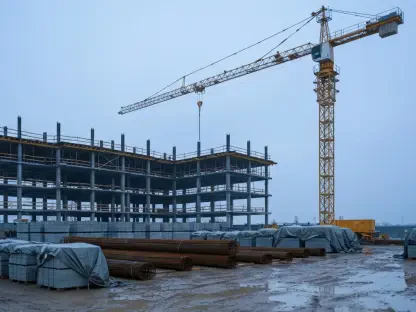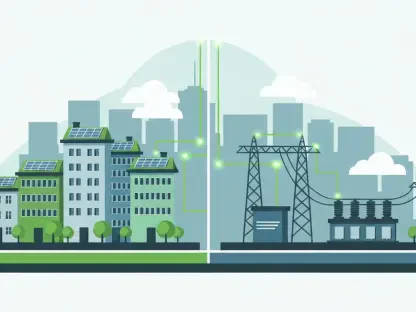Luca Calarailli is well-regarded in the field of construction, his expertise in design and architecture paired with a deep interest in technological innovations driving the industry forward. As a passionate advocate for safety and modernization in urban settings, Luca discusses important public safety concerns in residential buildings, drawing from a recent situation at Tullio Towers. Here, Joshua Fairbourne engages Luca in a conversation about the intersection of infrastructure, technology, and resident well-being.
What prompted the recent meeting between Erie County officials and the staff from Tullio Towers?
The meeting came about after reports surfaced concerning non-operational elevators at Tullio Towers, a senior housing complex. With elevators out of work, many residents were stranded, raising immediate concerns about their safety and mobility. It was crucial for Erie County officials to rapidly assess the risks and devise interim solutions to ensure residents’ safety.
When did the issue with the elevators at Tullio Towers first come to your attention?
The problem caught attention following a news report about residents being trapped due to the elevators’ failure. It highlighted the urgency for intervention and a broader examination of infrastructure reliability in senior living spaces.
Can you describe the specific safety risks posed to the senior residents by the inoperable elevators?
Senior residents faced significant challenges, primarily those with mobility issues who couldn’t use the stairs. This situation imposed isolation risks and represented potential barriers during emergencies, with life-threatening consequences due to slow evacuation processes.
What interim measures have been implemented to ensure the safety and mobility of residents at Tullio Towers?
Interim measures include ensuring that stairwells remain clear for both residents and emergency personnel. Additionally, embedding alerts within the 911 dispatch system helps responders prepare for on-site conditions in advance, facilitating better-managed responses during emergencies.
How does the county’s 911 computer-aided dispatch system factor into the current situation at Tullio Towers?
Incorporating alerts into the dispatch system is vital because it informs first responders about the life hazards associated with the inoperable elevators. This preemptive notification allows EMS, police, and fire services to plan their approach using available stairwells efficiently.
What role do the Erie Fire Department and EmergyCare play in addressing this issue?
Both agencies were involved in assessing immediate life hazards. They provide crucial logistical support and reinforce safety measures for residents while ensuring efficient mobility and preparedness in emergencies.
How can pre-plans or response recommendations be altered during an ongoing incident? Who has the authority to make these changes?
Pre-plans can be modified in real-time based on the incident commander’s discretion. They hold the authority to make necessary adjustments during an incident to optimize response strategies and ensure safety protocols are effectively implemented.
Could you explain the oversight responsibilities of the county housing authority in this situation?
The housing authority is responsible for overseeing infrastructure integrity within residential complexes. They must engage with building owners to resolve issues quickly and comprehensively, ensuring that necessary repairs and upgrades are promptly executed to prevent recurrence.
Have you had any communications with the owners of Tullio Towers, and what feedback have you received so far?
Direct communication with the building owners is ongoing, emphasizing the necessity to address the repairs swiftly. The goal is to establish accountability measures and ensure that any infrastructure deficiencies don’t reoccur.
What long-term solutions are you considering to prevent similar issues at Tullio Towers or other buildings in the future?
Long-term solutions involve strategic investments in system upgrades and regular maintenance checks, leveraging technological advancements to enhance building functionality. Establishing robust management practices for ongoing infrastructure assessments will be critical.
How often will the county monitor this situation to ensure that the residents’ needs are being addressed?
Continuous monitoring is planned to ensure consistent follow-up on repairs and the residents’ overall well-being. Regular reports and updates will help track progress and address any emerging concerns swiftly.
What are the next steps the county plans to take regarding this issue?
Aside from immediate repairs, developing comprehensive emergency plans for non-operational scenarios is essential. The county also plans to involve community stakeholders in strategic planning to bolster collective response capabilities.
In your opinion, what could be done differently to prevent such “large failures” in the future?
Proactive infrastructure management is key, including routine inspections and transparent communication with property stakeholders. Utilizing smart technologies for predictive maintenance and engaging residents in safety awareness can also play crucial roles in preempting issues.
How do you think the public or community can assist or get involved in ensuring the welfare of the residents at Tullio Towers?
Community involvement is invaluable. Volunteering to assist mobility-compromised residents with daily needs, participating in community safety drills, and advocating for infrastructure transparency can foster a supportive environment ensuring residents are not left vulnerable.









